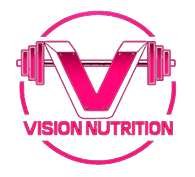What's the Real Key to Achieving Your Dream Physique: Gym Sessions, Food, Or Recovery?
- Edward Llewellyn
- Aug 16
- 3 min read
By Ed Llewellyn, Owner of Vision Nutrition Bedford (Bedfordshire’s premier specialist supplement store) and Founder & Head Body Transformation and Bodybuilding Coach at Union Jacked Coaching
The Golden Trio: Training, Nutrition, and Recovery
When chasing that dream physique, ask yourself: what’s the engine, what fuels it, and what keeps it humming? The answer—hard gym training, smart nutrition, and intentional recovery—all interlock. Let’s break down why each one matters, and how they stack together.
1. Hard Gym Training – The Spark That Lights the Fire
Training is the primal stimulus for muscle growth. As the classic review states, “many factors mediate the hypertrophic process and mechanical tension, muscle damage, and metabolic stress all can play a role” .
Of these, mechanical tension stands strong as the heavyweight champion. As Schoenfeld notes in Science and Development of Muscle Hypertrophy: “Mechanical tension may be the most important factor in training-induced muscle hypertrophy.”
Mechanical tension doesn’t act solo—it amplifies other processes. Research shows heavy loads likely spark metabolic stress and some muscle damage, creating a potent hypertrophic cocktail .
Pro Tip: Incorporate all three: lift heavy (mechanical tension), blast supersets (metabolic stress), and train with varied tempos or new angles (mild muscle damage) to maximize growth .
2. Nutrition – Supplying the Fuel for Growth
You can train till you drop, but without nutrition, muscles won’t stick around. The core of this is protein.
Meta-analysis reveals that protein intakes above ~1.6 g/kg/day do not further contribute to gains in fat-free mass . That’s your science-backed target—more than the RDA of 0.8 g/kg/day—especially for lifters aiming to grow .
That said, a nuanced take acknowledges flexibility: protein above ~1.6 g/kg/day “should not be viewed as an ironclad or universal limit” . Many experts still set the range at 1.6 to 2.2 g/kg/day for optimal results .
Key Insight: It’s about hitting the target consistently—not obsessing over the extra gram or two.
3. Recovery – The Hidden Catalyst to Real Change
You lift, you eat—but where does growth actually happen? In recovery.
Studies show that inadequate sleep impairs maximal muscle strength in compound movements . Sleep restriction, particularly over consecutive nights, may also reduce strength output during complex lifts .
Recovery isn’t just about muscles—it’s molecular. A recent review highlights how sleep, protein intake, and training synergistically influence muscle protein synthesis—underscoring recovery’s central role in enabling adaptation .
Skimp on recovery, and you’re flooding the funnel without it ever reaching its destination.
The Hierarchy of Importance
Putting it all together:
Training — The primary driver. Without the right stimulus, nothing else matters.
Nutrition — The enabler. Provides the building blocks for adaptation.
Recovery — The amplifier. Only through repair and rest does real progress become visible.
Training ignites, nutrition fuels, and recovery lets the engine run.
Final Thoughts
If you want that dream physique:
Train smart and hard—with focus on tension, variety, and overload.
Fuel consistently with ~1.6–2.2 g protein per kg body weight.
Protect your recovery—especially sleep—to let your body adapt, rebuild, and grow.
It’s not one versus the other—it’s all three working in concert.
Are you ready to unlock your best physique yet? Drop into Vision Nutrition Bedford and speak to Ed about Union Jacked Coaching to see how tailored training, smart nutrition, and recovery science can elevate your results.”





Comments